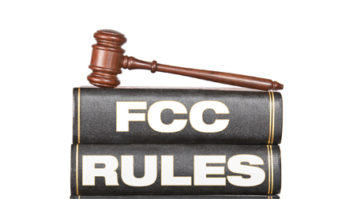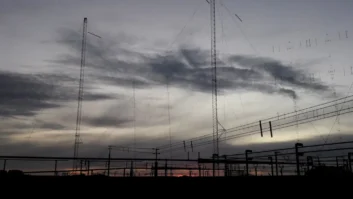This is the second in a series about FM translators. In the Dec. 17 issue, we looked at the basic regulatory aspects. In this second part, we approach translators from the perspective of the FM licensee, in particular the licensee of an in-contour fill-in FM translator carrying the content of an AM station or HD sub-channel. Part one can be found online: http://bit.ly/1HGGUnA.

iStockphoto/Robin Olimb For the FM translator licensee, there is uncertainty and risk in owning an FM translator station under the FCC’s secondary facility interference-based FM translator rules.
Ideally, an FM translator is on a channel that has little chance for a proximate full-service station to move or upgrade in a manner that might displace the translator. At the same time, the FM translator should be on a channel that is as clean as possible of other co-channel and adjacent channel FM signals, which will achieve maximum coverage and reduce the chances of interference to other stations.
DO THE LEGWORK
If a prospective FM translator licensee has a choice of a dial location either in applying for a new FM translator or a prospective move or channel change of an existing facility, the physical “driving” of an FM frequency in the anticipated coverage area is a valuable exercise. If any other FM station can be heard on the channel, the choice of that channel should be evaluated both for the potential of the received station curtailing the coverage of the translator (FM translators do not easily prevail over higher power signals) and for the potential of creating interference to bona-fide listeners of an existing full-service, LPFM or other translator station.
Longley-Rice coverage maps are highly useful in assessing potential FM translator coverage and the chances for interference to and interfering with another station.
STUDY PATTERNS
Another important indication of the potential for interference complaints is a study of the audience patterns and programming of any co-channel or first adjacent channel station that has listeners within the reach of the FM translator’s signal.
Assess whether any co-channel or adjacent channel station has a programming format that might attract listeners in weak signal areas. Is the subject station carrying a religious or ethnic programming format that is otherwise unavailable in the area? Is the subject station an NCE station on the commercial band that is the only source for public radio programming? Is the subject station carrying an esoteric format with unique air personalities? If any of these questions are answered “yes,” then a potential for interference complaints increases.
An FM translator can be displaced not only because of interference complaints from listeners to existing stations but also as a result of FM full-service station moves or upgrades. Under the current FCC rules, it is safe to observe that most potential FM station moves or upgrades have already occurred.
If the FCC moves forward with the proposed Class C4 classification for FM stations or dropping mileage protections for under-powered or under-height class facilities, or allowing FM stations to expand coverage areas anywhere they will fit, that could decimate many existing FM translators.
To the credit of Class C4 proponent SSR Communications Inc., protections for fill-in FM translators were proposed in its comments filed in RM-1177 — see those comments online at http://bit.ly/1ABb49C. (I assisted SSR Communications Inc. in fashioning the proposed FM translator protections). SSR Communications Inc. argues that fill-in FM translator interference standards should be reset to be more in congruence with what are the current standards for LPFM stations on the theory that LPFMs and FM translators are now to be treated equally under the law.
Prior to investing large sums into either acquiring or moving an FM translator, a consulting engineer should be asked to not only look at the potential for existing FM station moves and upgrades that could impact the translator but also what might occur if the FCC was to move forward with the Class C4 proposal.
In Part 3, we will look at some of the challenges AM station licensees may face in acquiring an FM translator, either in the marketplace or in the proposed AM-only FCC FM translator filing window.
Email [email protected] with questions — the last installment of the series will answer them. John F. Garziglia is a veteran radio and television attorney offering assistance in all areas of Federal Communications Commission law in the Washington, D.C., offices of Womble Carlyle. For other publications, see listings at www.linkedin.com/in/johngarziglia.












